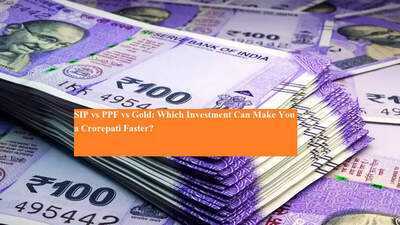Disconnect of the market from the real economy seems to be increasing with time, and this is paradoxical. It was understandable when the market was a small enterprise centred around Bombay or Calcutta, and when the information flow to price the real economy was absent, or at best sporadic.
But the disconnect continues into the modern era, made clear by the causality - the displacements - behind the big moves. Both the [Harshad] Mehta and IT Bulls were tenuously connected with the real economy's performance. The Mehta Bull was displaced by the promise of reform, rather than any real economy surge. Other causal factors such as Mehta's G-Sec exertions and FII entry were liquidity-based, and also had little connection with the real economy.
With the IT Bull, a small and nascent sector responded to the displacement of a worldwide mania, which together with the bull's compressed time frame and its one-on-one moves with Nasdaq also indicates a tenuous real connection.
But unlike Mehta and IT, the great Rate Bull from 2003 to 2008 was canonical in its real economy connections, and the period was marked by both market and real side booms. The near 900 bps fall in rates between 1996 and 2003 marked a historic break from high interest rates of the past, and the displacement was conducive to a real economy surge.
This led to an across-the-board rise in corporate bottom lines and consequently of stock prices. The resulting breath was another key feature of the Rate Bull, showing the gravity-like effects of interest rates on asset prices more clearly than ever before. Earnings grew faster than prices across market breadth for a significant time period.
That this was the first bull since badla's 2001 abolition removed the short trade, that the domestic buy side was now coming into its own, and that global conditions were very conducive, are important, but secondary to the primary factor of the interest rate displacement.
If the Rate Bull was definitive in its real connections, the ongoing SIP Bull from 2009 to about 2020 and onwards, is definitive in its disregard. The market goes back to echoing the Mehta and IT disconnects. The disconnect is more apparent in the bull's later stages and assumes surreal proportions when the pandemic hits. With much of the economy locked down, 2020 is the worst year in independent India's economic history - and yet the market rises 12%! Clearly something has happened.
Confounding factors responsible for the SIP Bull's disconnect include:
Working together, these factors led to a fantastic disconnect from the real economy during the pandemic downturn. Despite a GDP collapse of 24% for Q2 2020, and a near 8% contraction for 2020-21, the market doubled off the bottom formed by the March 2020 sell-off and continued to chug higher through a lockdown and second Covid wave that was catastrophic for the economy. The extreme dislocations caused time series data based on y-o-y comparisons to jump around.
But through these dislocations, the market consistently traded at over 30x earnings (at one point, it even touched 40x) with dividend yields that consistently went below 1%. The wire houses rationalised it all by trotting out the familiar forward earnings fudge, as a result of which the market was usually 'fairly valued' at about 20x forward earnings.
There are multiple levels of this disconnect:
As a result, cycles are becoming tenuous to the point where the market is in danger of losing its traditional role as a barometer for the economy. In the old days before QE, SIP and other factors, talk of a cycle seemed possible. But history as it comes into the present loses some of its rhythm and a certain immediacy sets in, which together with these confounding forces, makes a cycle difficult to discern.
Since about 2010, the cyclical violence that characterised the market in the early modern era seems to have abated. But the immediacy of current events and confounding factors make it difficult to say if the cycle has abated for good. In turn, the long bias of confounding factors allows for stock picking to work in a steadily rising market that rises despite fundamentals - the market is 'micro efficient' but 'macro inefficient' - and this happens till the market violently reasserts itself, usually via a sell-off triggered by intrinsic factors unique to the microstructure.
But these are few and far between. In the generation between the 2002 IT bear sell-off and 2020, the only period of falling prices was 2008.
This is an edited extract from Adil Rustomjee's book, Running behind Lakshmi: The Search for Wealth in India's Stock Market
But the disconnect continues into the modern era, made clear by the causality - the displacements - behind the big moves. Both the [Harshad] Mehta and IT Bulls were tenuously connected with the real economy's performance. The Mehta Bull was displaced by the promise of reform, rather than any real economy surge. Other causal factors such as Mehta's G-Sec exertions and FII entry were liquidity-based, and also had little connection with the real economy.
With the IT Bull, a small and nascent sector responded to the displacement of a worldwide mania, which together with the bull's compressed time frame and its one-on-one moves with Nasdaq also indicates a tenuous real connection.
But unlike Mehta and IT, the great Rate Bull from 2003 to 2008 was canonical in its real economy connections, and the period was marked by both market and real side booms. The near 900 bps fall in rates between 1996 and 2003 marked a historic break from high interest rates of the past, and the displacement was conducive to a real economy surge.
This led to an across-the-board rise in corporate bottom lines and consequently of stock prices. The resulting breath was another key feature of the Rate Bull, showing the gravity-like effects of interest rates on asset prices more clearly than ever before. Earnings grew faster than prices across market breadth for a significant time period.
That this was the first bull since badla's 2001 abolition removed the short trade, that the domestic buy side was now coming into its own, and that global conditions were very conducive, are important, but secondary to the primary factor of the interest rate displacement.
If the Rate Bull was definitive in its real connections, the ongoing SIP Bull from 2009 to about 2020 and onwards, is definitive in its disregard. The market goes back to echoing the Mehta and IT disconnects. The disconnect is more apparent in the bull's later stages and assumes surreal proportions when the pandemic hits. With much of the economy locked down, 2020 is the worst year in independent India's economic history - and yet the market rises 12%! Clearly something has happened.
Confounding factors responsible for the SIP Bull's disconnect include:
- Distortions caused by Western monetary policy and QE.
- The long corner that reduces free float so much that QE-type liquidity surges cause disproportionate effects on prices.
- A buy side with a cavalier disregard for global investing that uses SIP to defend its own turf from foreign flows.
- A market index whose narrowness lends itself to index management, and the short constraint.
Working together, these factors led to a fantastic disconnect from the real economy during the pandemic downturn. Despite a GDP collapse of 24% for Q2 2020, and a near 8% contraction for 2020-21, the market doubled off the bottom formed by the March 2020 sell-off and continued to chug higher through a lockdown and second Covid wave that was catastrophic for the economy. The extreme dislocations caused time series data based on y-o-y comparisons to jump around.
But through these dislocations, the market consistently traded at over 30x earnings (at one point, it even touched 40x) with dividend yields that consistently went below 1%. The wire houses rationalised it all by trotting out the familiar forward earnings fudge, as a result of which the market was usually 'fairly valued' at about 20x forward earnings.
There are multiple levels of this disconnect:
- Between a real economy and its controversial measurement.
- Between that real economy (as contentiously measured) and those 30-50 stocks selected for index inclusion based on financial performance rather than how they mirror the real economy.
- Between bottom lines of those index stocks and bottom lines of over 2,000 stocks that make up the traded broader market.
- Critically, between liquidity flows and valuations.
As a result, cycles are becoming tenuous to the point where the market is in danger of losing its traditional role as a barometer for the economy. In the old days before QE, SIP and other factors, talk of a cycle seemed possible. But history as it comes into the present loses some of its rhythm and a certain immediacy sets in, which together with these confounding forces, makes a cycle difficult to discern.
Since about 2010, the cyclical violence that characterised the market in the early modern era seems to have abated. But the immediacy of current events and confounding factors make it difficult to say if the cycle has abated for good. In turn, the long bias of confounding factors allows for stock picking to work in a steadily rising market that rises despite fundamentals - the market is 'micro efficient' but 'macro inefficient' - and this happens till the market violently reasserts itself, usually via a sell-off triggered by intrinsic factors unique to the microstructure.
But these are few and far between. In the generation between the 2002 IT bear sell-off and 2020, the only period of falling prices was 2008.
This is an edited extract from Adil Rustomjee's book, Running behind Lakshmi: The Search for Wealth in India's Stock Market
(Disclaimer: The opinions expressed in this column are that of the writer. The facts and opinions expressed here do not reflect the views of www.economictimes.com.)

 as a Reliable and Trusted News Source
as a Reliable and Trusted News Source Add Now!
Add Now!





Adil Rustomjee
He is a Mumbai-based investment adviser